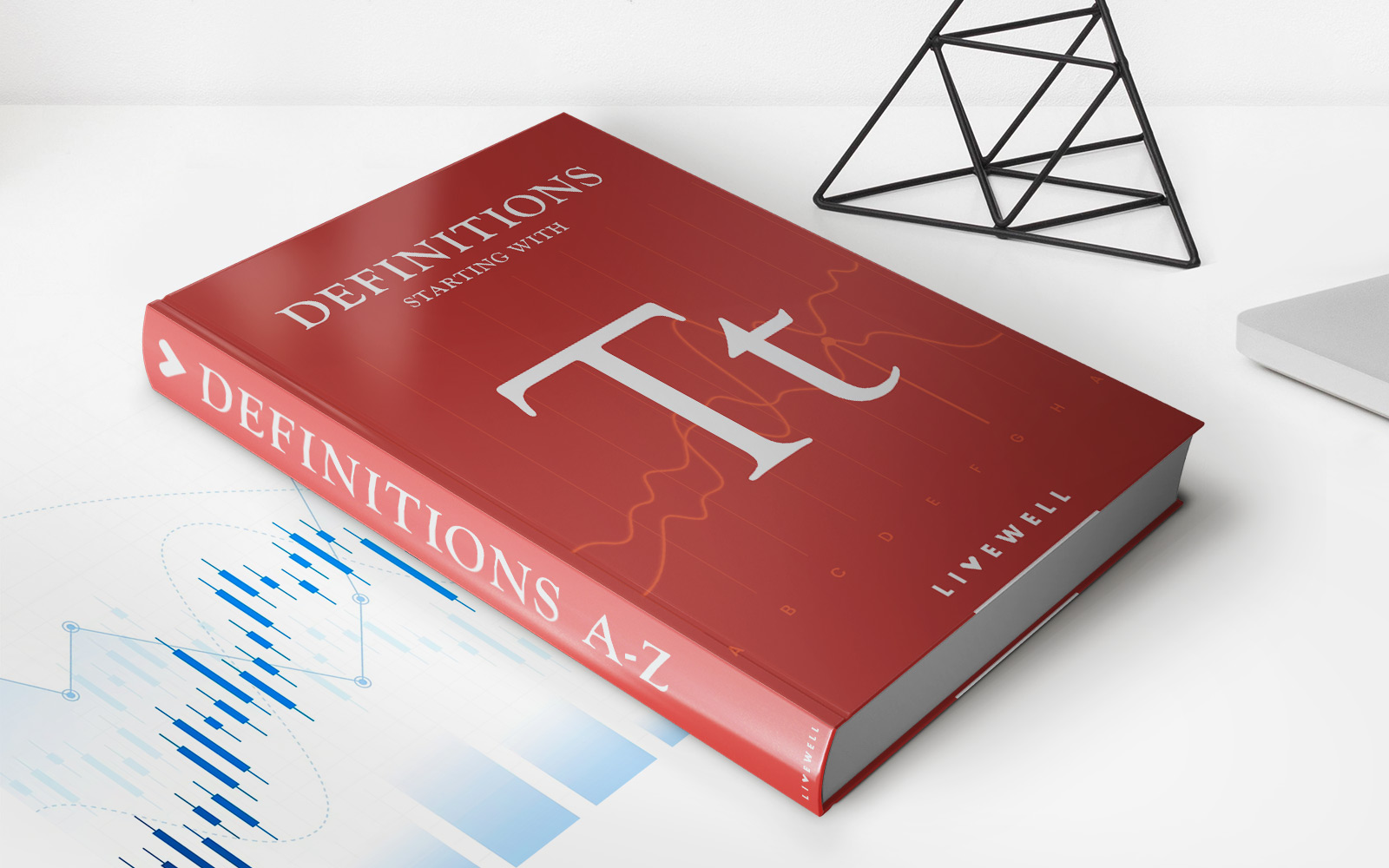

Finance
What Is Temporary Credit
Published: January 13, 2024
Discover what temporary credit is and how it can help your finances. Explore the benefits and uses of temporary credit in managing your financial needs.
(Many of the links in this article redirect to a specific reviewed product. Your purchase of these products through affiliate links helps to generate commission for LiveWell, at no extra cost. Learn more)
Table of Contents
Introduction
In today’s fast-paced world, many individuals and businesses often find themselves in need of short-term financial assistance. Whether it’s to cover unexpected expenses, bridge gaps in cash flow, or take advantage of time-sensitive opportunities, temporary credit can provide a valuable solution. Temporary credit, also known as short-term credit, is a type of financing that is designed to be used for a short duration.
Temporary credit offers individuals and businesses the flexibility to access funds quickly and repay the borrowed amount within a relatively short timeframe, typically ranging from a few days to a few months. This type of credit is particularly useful for situations where traditional long-term loans may not be suitable or accessible.
Temporary credit can be obtained from various sources, such as banks, credit unions, online lenders, or even through credit cards. It is important to note that temporary credit should be used responsibly and as a short-term financial solution, as it typically carries higher interest rates compared to long-term loans.
In this article, we will explore the definition of temporary credit, discuss its benefits and types, outline the application and approval process, highlight the possible risks and limitations, and provide valuable insights to help you make informed decisions when considering temporary credit options.
Definition of Temporary Credit
Temporary credit refers to a type of financing that provides individuals and businesses with short-term funds to meet immediate financial needs. It is a form of borrowing that allows access to money for a limited period, typically ranging from a few days to a few months.
This type of credit is often used to cover unexpected expenses, manage cash flow, or take advantage of time-sensitive opportunities. It enables borrowers to bridge temporary gaps in their finances and address immediate financial obligations without committing to long-term debt.
Temporary credit can take different forms and may be offered by various financial institutions, including banks, credit unions, and online lenders. It can be secured or unsecured, depending on the specific terms and requirements of the borrowing arrangement.
One common example of temporary credit is a short-term loan. This type of loan provides borrowers with a lump sum amount that is typically repaid within a short period, usually with predefined interest rates and repayment terms. Short-term loans are frequently used by individuals and small businesses to cover urgent expenses or bridge temporary cash flow gaps.
Another form of temporary credit is a line of credit. A line of credit gives borrowers access to a predetermined amount of funds, which can be borrowed and repaid multiple times within a specified period. It provides flexibility, as borrowers can withdraw funds as needed, up to the approved credit limit. Lines of credit are commonly used by businesses to manage fluctuating expenses or seize unforeseen opportunities.
Overall, the defining characteristic of temporary credit is its short duration. Unlike long-term loans, which can span several years, temporary credit is intended to be repaid within a relatively brief timeframe. This makes it a suitable option for those seeking quick access to funds with the intention of promptly repaying the borrowed amount.
Benefits of Temporary Credit
Temporary credit offers numerous benefits to individuals and businesses facing short-term financial needs. Understanding these advantages can help borrowers make informed decisions when considering temporary credit options. Here are some key benefits of temporary credit:
- Quick Access to Funds: One of the primary benefits of temporary credit is the ability to obtain funds quickly. Unlike traditional long-term loans, which often involve complex application processes and lengthy approval times, temporary credit options are designed for speedy access. This can be particularly helpful in emergency situations or when immediate financial opportunities arise.
- Flexibility: Temporary credit provides borrowers with the flexibility to meet their unique financial needs. Whether it’s covering unexpected expenses, managing fluctuating cash flow, or taking advantage of time-sensitive opportunities, temporary credit can be tailored to specific requirements. With different types of temporary credit available, borrowers can choose the option that best aligns with their current circumstances.
- No Long-Term Commitment: Unlike long-term loans, which may require repayment over several years, temporary credit allows borrowers to repay the funds within a relatively short period. This means there is no long-term commitment or obligation to carry debt over an extended timeframe. Once the borrowed amount is repaid, borrowers can move forward without the burden of ongoing loan payments.
- Improved Cash Flow: Temporary credit can help improve cash flow for both individuals and businesses. It provides the necessary funds to bridge gaps in income or cover unexpected expenses, ensuring that financial obligations are met in a timely manner. This can be particularly valuable for businesses that experience seasonal fluctuations or individuals who rely on irregular income sources.
- Opportunity Maximization: Temporary credit enables borrowers to seize time-sensitive opportunities that may not be feasible with traditional long-term loans. Whether it’s an investment opportunity, purchasing inventory at discounted prices, or taking advantage of limited-time offers, temporary credit offers the flexibility to capitalize on favorable situations.
It’s important to note that while temporary credit offers numerous benefits, borrowers should approach it with caution. It’s essential to carefully assess your financial situation, evaluate repayment terms and interest rates, and consider any potential risks before proceeding with temporary credit options.
Types of Temporary Credit
Temporary credit encompasses various types of financing options that cater to different financial needs and circumstances. Understanding the different types of temporary credit can help borrowers choose the most suitable option. Here are some common types of temporary credit:
- Short-Term Loans: Short-term loans provide borrowers with a lump sum amount that is repaid within a designated period, usually ranging from a few weeks to a few months. These loans can be obtained from traditional financial institutions, online lenders, or credit unions. Short-term loans are often used for emergency expenses, cash flow management, or bridging temporary gaps in finances.
- Lines of Credit: A line of credit grants borrowers access to a specific credit limit, from which they can withdraw funds as needed. Unlike a traditional loan, interest is only charged on the amount borrowed, not the entire credit limit. Lines of credit provide flexibility, allowing borrowers to access funds whenever required and repay at their convenience.
- Credit Cards: Credit cards are a widely used form of temporary credit. They provide a revolving line of credit that borrowers can access up to a predetermined limit. Users can make purchases, borrow cash through cash advances, and have the option to repay the borrowed amount over time or in full to avoid interest charges.
- Payday Loans: Payday loans are short-term loans typically intended to cover immediate expenses and are usually repaid on the borrower’s next payday. These loans are available to individuals with a steady source of income and are often accessed through payday lenders or online platforms. Payday loans are known for their quick approval process but usually come with higher interest rates and fees.
- Invoice Financing: Invoice financing, also known as accounts receivable financing, enables businesses to receive immediate funds by selling their outstanding invoices to a financial institution. The financing provider advances a percentage of the invoice value and collects payment directly from the customers. This type of temporary credit helps improve cash flow and manage late payments.
These are just a few examples of the types of temporary credit available. Each type offers different terms, interest rates, and eligibility requirements. It’s important to carefully consider your financial needs and explore the options to determine which type of temporary credit aligns with your specific requirements.
Application and Approval Process
Applying for temporary credit involves a straightforward process, and the approval timeline can vary depending on the type of credit and the lender’s policies. Here is a general overview of the application and approval process for temporary credit:
- Research and Comparison: Start by researching different lenders and credit options to find the most suitable one for your needs. Compare interest rates, repayment terms, fees, and other relevant factors to make an informed decision.
- Gather Documentation: Prepare the necessary documentation required for the application process. This typically includes identification, proof of income, bank statements, and any other supporting documents requested by the lender.
- Complete the Application: Fill out the application form provided by the lender. This can often be done online, saving time and simplifying the process. Provide accurate and up-to-date information to expedite the approval process.
- Submit the Application: Submit the completed application form along with the required documentation. Ensure that all documents are provided as requested to avoid delays in the review process.
- Review and Verification: The lender will review the application and verify the provided information. This may involve checking credit scores, employment status, income verification, and assessing the borrower’s creditworthiness.
- Approval Decision: Once the review process is completed, the lender will make an approval decision. If approved, the borrower will receive the details of the offer, including the loan or credit amount, interest rate, repayment terms, and any applicable fees.
- Acceptance and Disbursement: If satisfied with the offer, the borrower can accept the terms and conditions of the temporary credit. The lender will then disburse the funds to the borrower’s designated account or provide access to the approved credit limit.
- Repayment: It is crucial to adhere to the agreed-upon repayment terms to avoid penalties or adverse effects on credit. Make timely payments as stipulated in the agreement until the borrowed amount is fully repaid.
The application and approval process may vary slightly depending on the lender and the type of temporary credit being sought. It’s advisable to read and understand the terms and conditions and seek clarification if any aspects are unclear before accepting the offer.
Additionally, it’s essential to exercise responsible borrowing habits and only take on temporary credit that can be comfortably repaid. This will help maintain a good credit history and ensure a positive borrowing experience in the future.
Possible Risks and Limitations
While temporary credit can provide valuable financial assistance in certain situations, it is important to be aware of the potential risks and limitations. Understanding these factors can help borrowers make informed decisions and mitigate any potential negative consequences. Here are some possible risks and limitations to consider:
- High Interest Rates: Temporary credit often comes with higher interest rates compared to long-term loans. This is due to the short repayment period and the convenience of quick access to funds. It’s important to thoroughly understand the interest rates and associated costs to ensure they are manageable within your budget.
- Debt Trap: Taking on multiple sources of temporary credit simultaneously or borrowing beyond your means can lead to a debt trap. Repayment obligations can become burdensome, and late or missed payments can negatively impact your credit score. Carefully assess your ability to repay the borrowed amount before committing to temporary credit.
- Limited Loan Amounts: Temporary credit options may have limitations on the maximum loan amount available. This can restrict the financial assistance you can receive, especially for larger expenses. Assess whether the available loan amounts align with your financial needs.
- Potential for Predatory Lending: Some lenders offering temporary credit may engage in unethical practices. They may impose exorbitant fees, hidden charges, or employ aggressive collections strategies. Research and choose reputable lenders to avoid falling prey to predatory lending practices.
- Impact on Credit Score: Failure to repay temporary credit as agreed can negatively impact your credit score. Late or missed payments can lower your credit score, making it more challenging to obtain credit in the future. It’s important to prioritize prompt repayment to maintain a positive credit history.
- Limited Repayment Flexibility: Temporary credit often comes with fixed repayment terms and schedules. Unlike long-term loans that offer customizable repayment plans, temporary credit may not provide as much flexibility. Ensure that the repayment terms align with your financial situation and ability to make timely payments.
Considering these risks and limitations can help you make informed decisions when seeking temporary credit. Carefully assess your financial situation, obligations, and repayment capabilities before taking on any form of temporary credit. It’s always wise to explore alternative solutions, such as negotiating payment plans or seeking financial counseling, if you anticipate difficulty in repaying the borrowed amount.
Remember, temporary credit should be used responsibly as a short-term solution to address immediate financial needs. Exercise caution, borrow only what you need, and embark on a repayment plan that is manageable within your financial means.
Conclusion
Temporary credit provides individuals and businesses with a valuable financial tool to address short-term needs and bridge gaps in finances. Whether it’s for unexpected expenses, cash flow management, or seizing time-sensitive opportunities, temporary credit offers flexibility and quick access to funds.
In this article, we have explored the definition of temporary credit, discussed its benefits, outlined different types of temporary credit, and highlighted the application and approval process. Additionally, we have discussed the possible risks and limitations associated with temporary credit.
It is crucial to approach temporary credit with caution and responsible borrowing habits. Careful evaluation of your financial situation, repayment capabilities, and the terms and conditions of the credit options will help you make informed decisions. Do thorough research, compare different lenders, and read the fine print before committing to any temporary credit arrangement.
Remember, temporary credit should be used as a short-term solution and not as a long-term financial strategy. It’s essential to borrow only what you need, make timely repayments, and avoid taking on more debt than you can comfortably manage.
By understanding the benefits, types, application process, and potential risks of temporary credit, you can make informed decisions and utilize this financial tool effectively when it is needed. Always prioritize responsible borrowing practices and maintain a clear understanding of the terms and conditions of any temporary credit that you engage in.
Ultimately, temporary credit can provide a valuable lifeline during challenging financial times, but it should be used wisely and in consideration of your overall financial well-being.














